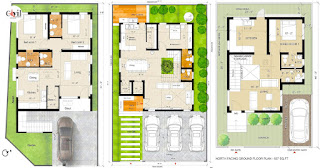Unlock Your Inner Craftsperson: DIY Furniture Plans for Custom Home and Office Pieces
Tired of mass-produced furniture that lacks personality and quality? Craving unique pieces that perfectly reflect your style and needs? Then it's time to explore the rewarding world of DIY furniture! Building your own furniture allows you to customize every detail, from dimensions and materials to finish and functionality. This article provides a comprehensive guide to finding and utilizing DIY furniture plans, empowering you to create stunning, bespoke pieces for your home and office.
Finding the Perfect DIY Furniture Plans
The internet is a treasure trove of DIY furniture plans, catering to all skill levels and styles. However, navigating this vast resource requires a strategic approach. Start by identifying your desired project. Do you envision a rustic farmhouse table, a sleek modern desk, or perhaps a whimsical bookshelf for your child's room? Once you have a clear vision, use specific keywords when searching online. For example, instead of simply searching "DIY furniture," try "DIY mid-century modern coffee table plans" or "DIY rustic farmhouse bench plans." This targeted approach yields more relevant results.
Utilizing Online Resources
Numerous websites and platforms offer free and paid DIY furniture plans. Pinterest is an excellent visual resource, allowing you to browse thousands of inspiring projects and discover links to detailed plans. Ana White and Shanty-2-Chic are renowned blogs featuring a wide variety of free plans, complete with step-by-step instructions and detailed cut lists. Etsy offers a marketplace for both digital and physical DIY plans, often providing unique and less common designs. Remember to carefully review the plan's complexity before committing to a project, ensuring it aligns with your woodworking skills and available tools.
Considering Your Skill Level
Selecting a plan that matches your woodworking expertise is crucial for a successful project. Beginners should gravitate towards simple projects with straightforward instructions and fewer intricate joinery techniques. Consider starting with a basic shelf or a simple nightstand to build confidence and hone your skills before tackling more complex designs. Intermediate and advanced woodworkers can explore ambitious projects like custom cabinets, intricate chairs, or even entire built-in units. Don't be afraid to challenge yourself, but always choose a plan you feel confident in completing successfully.
Essential Tools and Materials
Before you begin, gather the necessary tools and materials. The specific requirements vary depending on the chosen plan, but some common essentials include a measuring tape, pencil, saw (circular saw, jigsaw, or hand saw), drill, screwdriver, sandpaper, wood glue, clamps, and finishing supplies (paint, stain, varnish). Always prioritize safety – wear appropriate safety glasses and hearing protection throughout the project. Invest in quality tools; they will make the process smoother and yield better results. Ensure you purchase sufficient materials, accounting for potential errors or adjustments during construction. A well-stocked workshop enhances efficiency and minimizes frustration.
Building Your Masterpiece: Step-by-Step Construction
Follow the chosen plan meticulously. Each step provides crucial guidance, so don't skip any instructions. Accurately measure and cut your lumber. Precision is key to a well-built piece of furniture. Take your time and double-check your measurements before making any irreversible cuts. Use appropriate joinery techniques, carefully applying wood glue and clamps to ensure strong and durable joints. Sand all surfaces smoothly before applying your chosen finish. This ensures a professional-looking final product.
Finishing Touches
Once the construction is complete, carefully apply your chosen finish. This is where your furniture truly comes to life. Whether you opt for a natural wood finish, a vibrant paint color, or a sophisticated stain, the finishing process dramatically impacts the overall aesthetic. Apply multiple thin coats, allowing each coat to dry completely before applying the next. A final coat of clear sealant protects your furniture and enhances its longevity. Take pride in your creation; you've successfully transformed a set of plans into a unique and functional piece of furniture!
Beyond the Plans: Adding Your Personal Touch
While following a plan is important, don't be afraid to personalize your creation. Consider incorporating unique hardware, adding decorative elements, or modifying the design to better suit your space. The beauty of DIY furniture lies in its adaptability. This is your chance to create a truly one-of-a-kind piece that reflects your personal style and enhances your home or office.
Embrace the process, learn from your mistakes, and enjoy the immense satisfaction of crafting beautiful, functional furniture with your own two hands. Happy building!



























